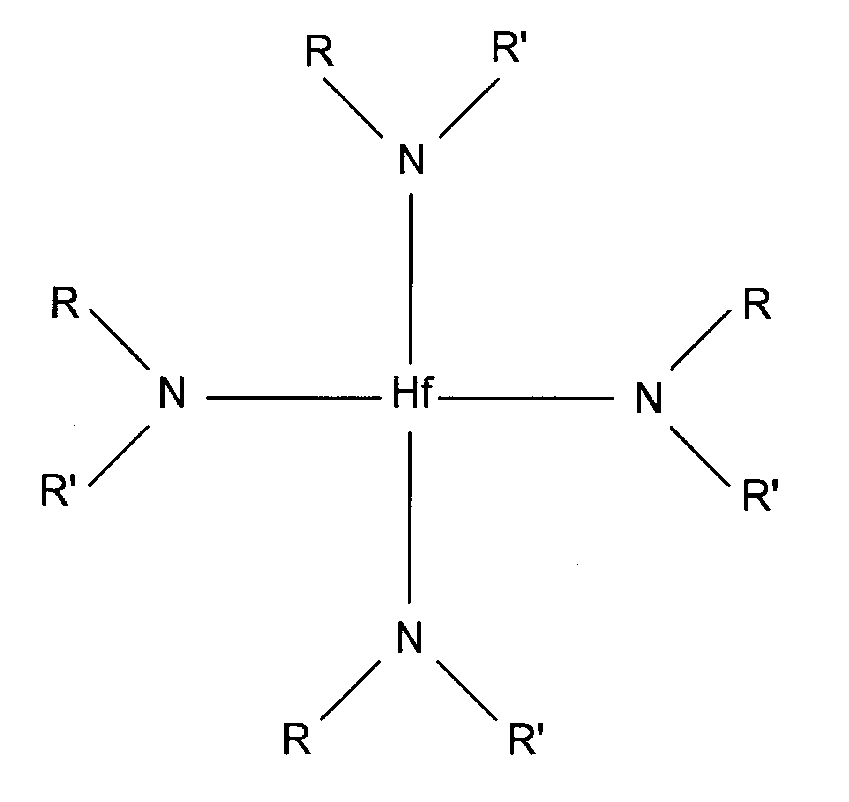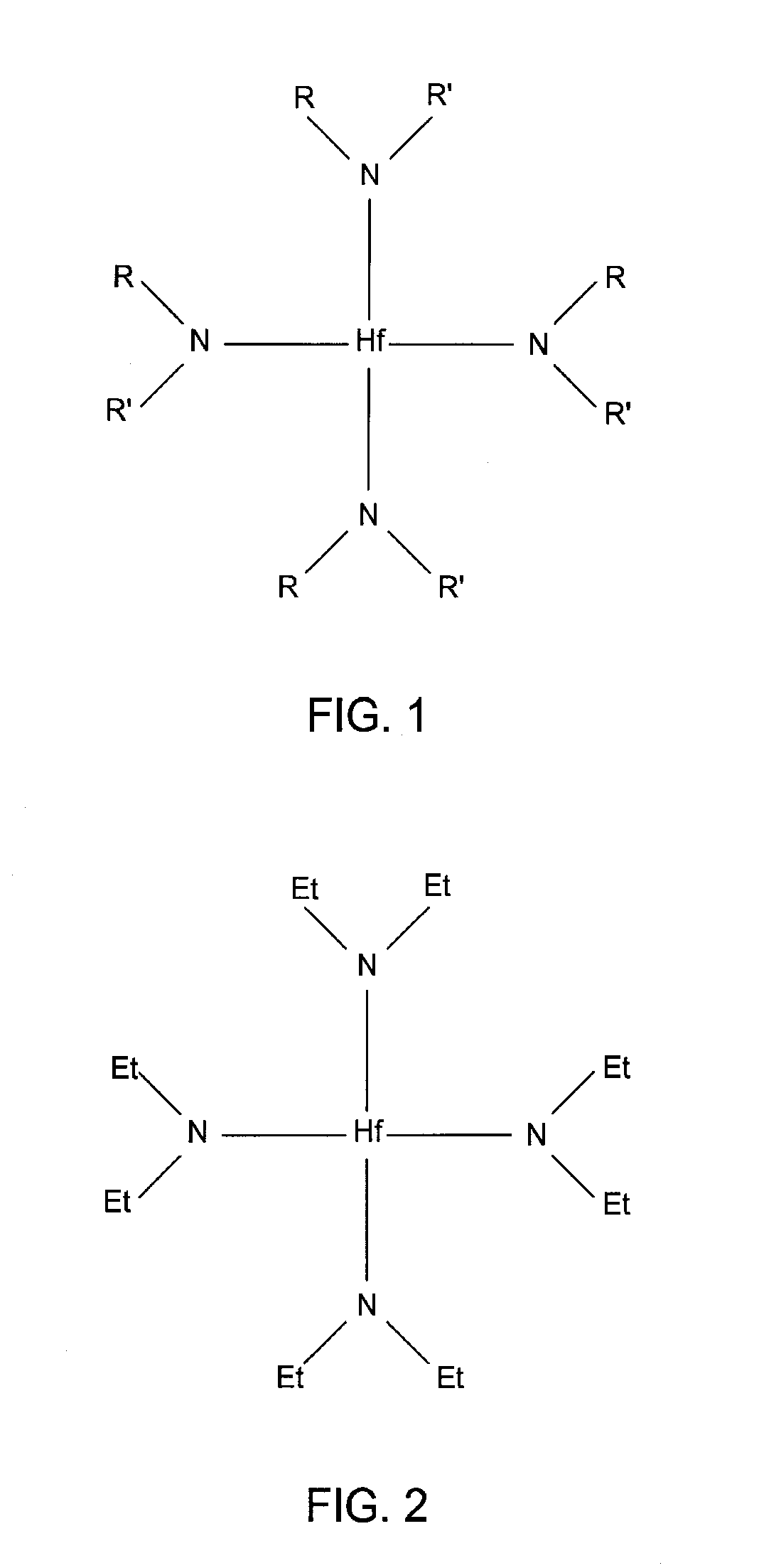Ald metal oxide deposition process using direct oxidation
a metal oxide and direct oxidation technology, applied in the direction of coatings, chemical vapor deposition coatings, metallic material coating processes, etc., can solve the problems of not addressing the removal of carbon from metal compounds produced from metal organic compounds, trace amounts of carbon in the deposited film,
- Summary
- Abstract
- Description
- Claims
- Application Information
AI Technical Summary
Benefits of technology
Problems solved by technology
Method used
Image
Examples
examples
[0037] Hafnium oxide films were deposited at a chamber pressure of 4 Torr by pulsing TDEAH in a nitrogen carrier for 10 seconds. The chamber was then purged with a pulse of a nitrogen gas for 10 seconds. Next, reactive oxygen and an argon carrier (Ar / O* ratio=1:2) was pulsed to the chamber for 10 seconds. Once the reactive gas / carrier pulse was terminated, a second pulse of nitrogen gas was introduced into the chamber for ten seconds to complete the cycle. This process was repeated for 40 cycles with substrate temperatures ranging from 150° C. to 325° C. The resulting hafnium oxide films were tested for WIW Thickness Non-uniformity and the results are shown in FIG. 4. The results in FIG. 4 show that atomic layer deposition (ALD) occurred at substrate temperatures between 150° C. and about 225° C. while pulsed CVD occurred above 225° C. The ALD films showed excellent uniformity.
[0038] Hafnium oxide films were then deposited at a chamber pressure of 4 Torr and a substrate temperature...
PUM
| Property | Measurement | Unit |
|---|---|---|
| temperature | aaaaa | aaaaa |
| pressure | aaaaa | aaaaa |
| sizes | aaaaa | aaaaa |
Abstract
Description
Claims
Application Information
 Login to View More
Login to View More - R&D
- Intellectual Property
- Life Sciences
- Materials
- Tech Scout
- Unparalleled Data Quality
- Higher Quality Content
- 60% Fewer Hallucinations
Browse by: Latest US Patents, China's latest patents, Technical Efficacy Thesaurus, Application Domain, Technology Topic, Popular Technical Reports.
© 2025 PatSnap. All rights reserved.Legal|Privacy policy|Modern Slavery Act Transparency Statement|Sitemap|About US| Contact US: help@patsnap.com



